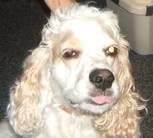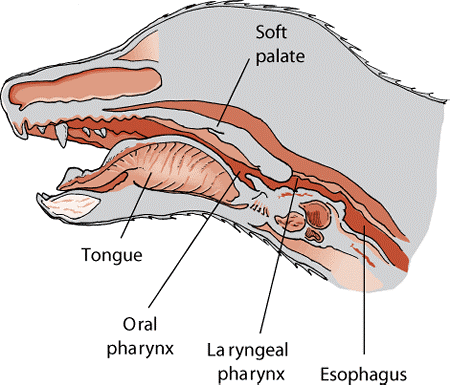
A regular sneeze is when dogs and cats forcefully expel air from their noses to blow out mucus or other irritants. A reverse sneeze, on the other hand, is a forceful inhalation when a pet sucks air into its pharynx and windpipe. The pharynx is the part of the anatomy that houses the tonsils, soft palate and tongue. The soft palate spasms during a reverse sneeze, which makes a loud noise that can sound like choking. Often, owners will panic because they don’t think their pet can breathe.
Image from www.merckmanuals.com
Reverse sneezing can be set off by allergies, excitement, irritants such as dust, drinking, eating quickly or anything else that has caused the back of the throat to swell. Certain breeds with flat faces, such as pugs or bulldogs, have extra tissue in their pharynx region and seem very susceptible to reverse sneezing as they can irritate their soft palate while inhaling. Small breed dogs, such as Yorkies, also seem to be more susceptible.
The good news is that reverse sneezing is rarely a condition that requires treatment. If you suspect that an irritant in the house has caused your pet to have reverse sneezing, getting it outside may clear its airway. Most times, it is temporary and the episode will stop on its own. However, if your pet experiences more than the occasional episode of reverse sneezing, it should be examined by a veterinarian.
Reverse sneezing can sound horrendous, like something is stuck in the dog or cat’s mouth or nose. If you think that your pet is having trouble breathing, call a veterinarian immediately. Mitchell Veterinary Services routinely gets emergency calls that are simply reverse sneezing, but if in doubt, have your pet assessed.
Watch videos below of a reverse sneeze for a cat and dog

